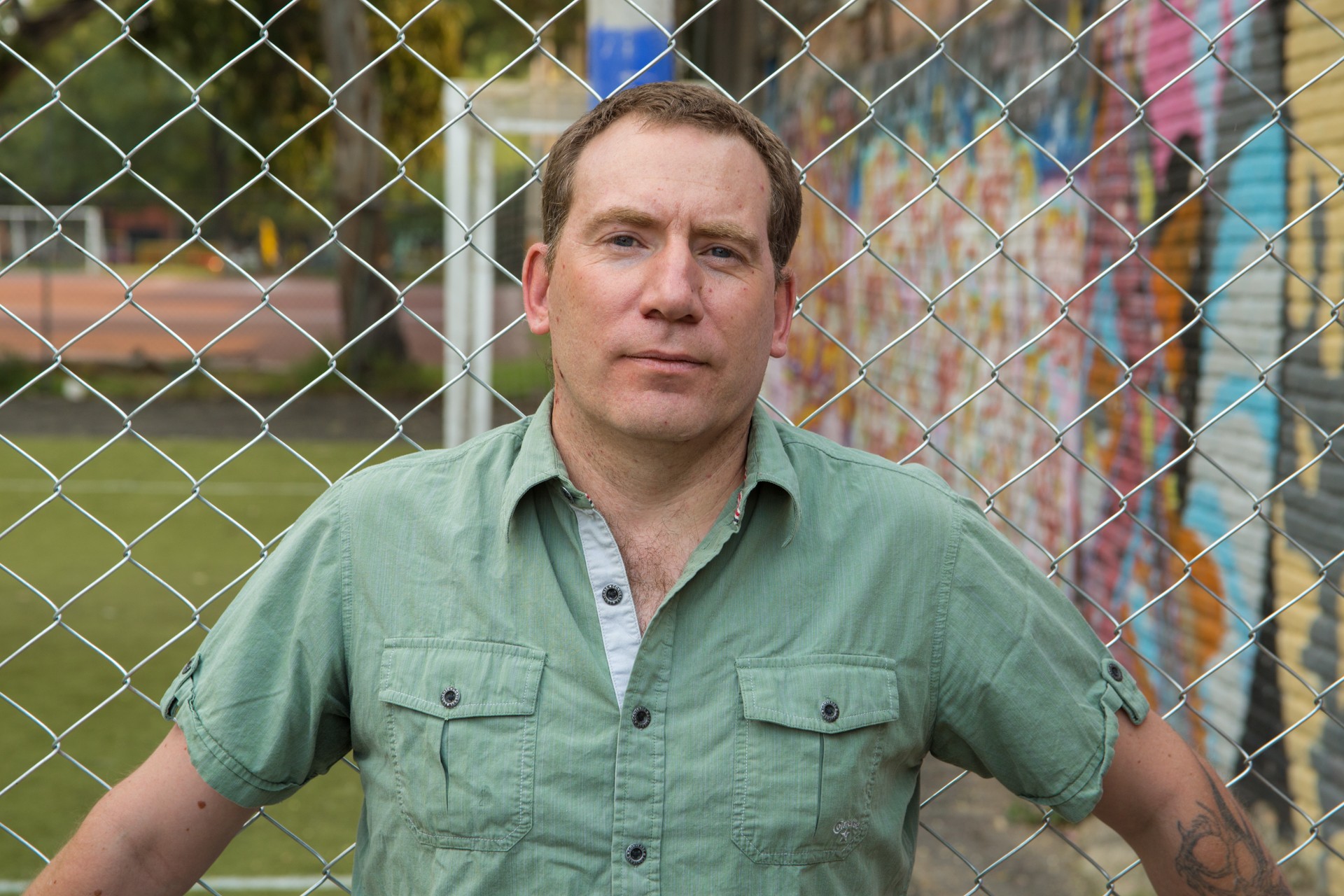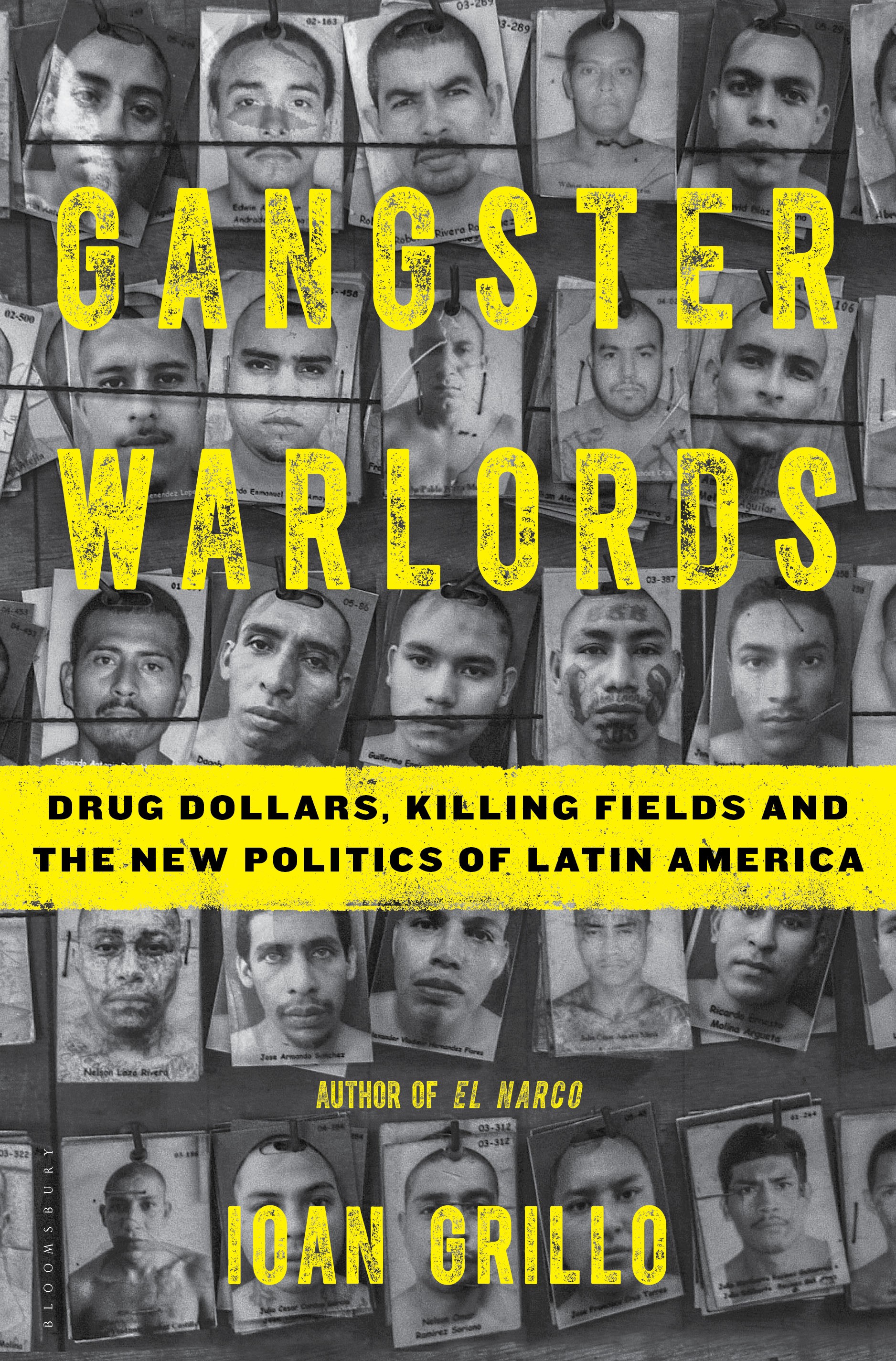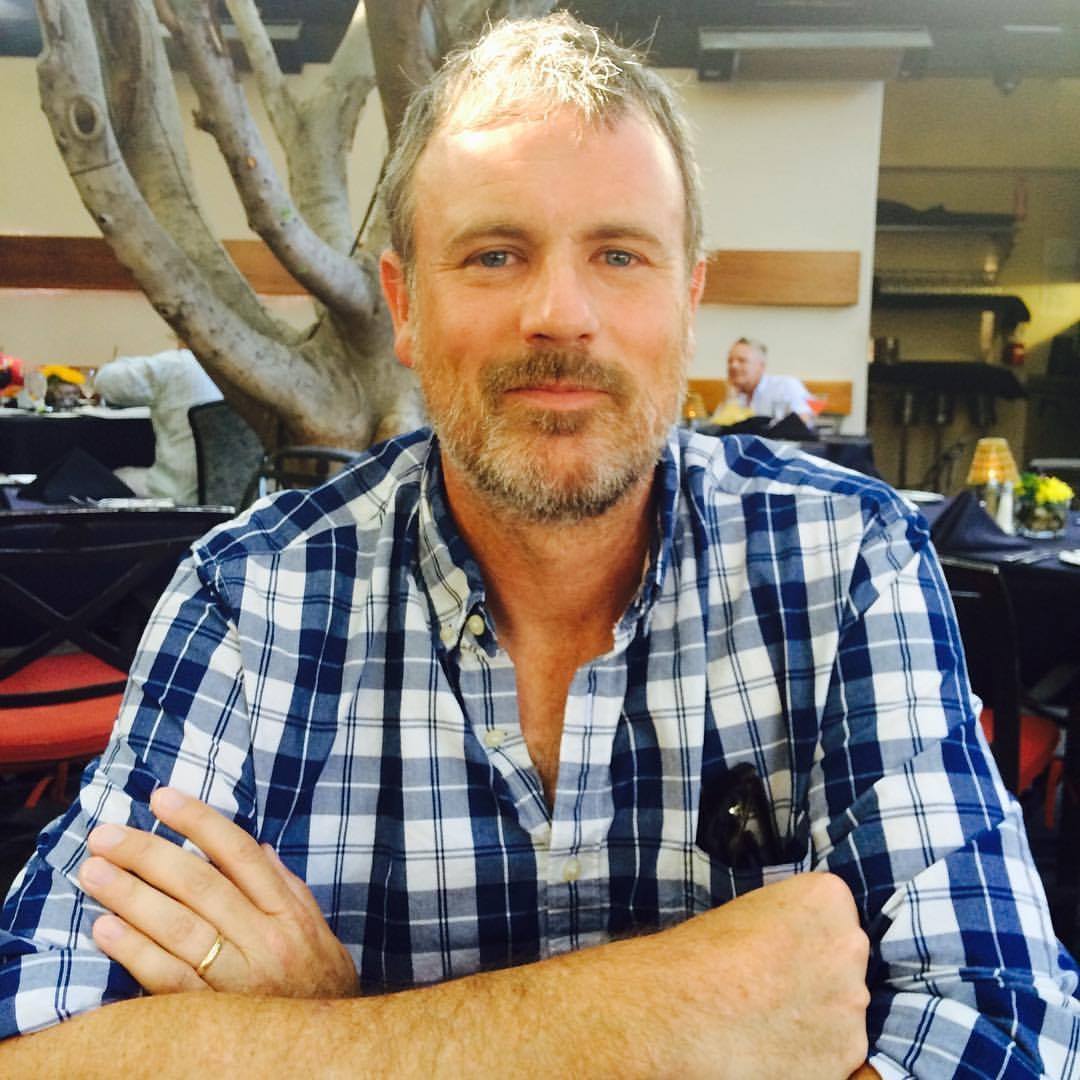
British journalist Ioan Grillo, author of the definitive history of the Mexican cartels, El Narco, has covered crime in Mexico since 2001. His reporting for that book took him to countless urban crime scenes and remote massacre sites, not to mention many a hair-raising police raid. For his latest book, Gangster Warlords—which Grillo will discuss tonight at Vroman’s Bookstore in Pasadena—he traveled throughout the hemisphere. Interviewing gang members, hitmen and drug traffickers from Jamaica to Mexico, Central America and Brazil, Grillo has charted a terrifying new development in the global war on drugs: the transformation of drug gangs into armed militias that control significant territory south of the border. His fascinating look at the criminal organizations that are transforming Latin America into a war zone without borders is a must read. Thanks to the East Coast blizzard that prevented Grillo from traveling to Washington, D.C. for a book signing, we were able to ask him a few questions about his latest book, and some of the risks associated with covering crime in the Western Hemisphere today.

OC Weekly: How did you come up with the idea for writing a book that expands on the reporting you’ve done in Mexico for a much more global focus?
Grillo: In the years I’ve been reporting on Mexico it became very clear that the issues Mexico is facing in terms of criminal violence and the transformation of drug cartels into armed militias that threaten the government were not exclusive to Mexico. It was happening in many countries across the hemisphere. We saw a similar phenomenon in Central America, South America and the Caribbean. In the speed of regular reporting, we often miss the bigger picture. You have these generic phrases like drug traffickers fighting Mexican sailors and these are actually armed paramilitary groups fighting highly trained Marines. I believe the issue of criminal militias overwhelming government is one of the big issues of the 21st century that we have to confront.
Covering crime must have changed a lot since you first began reporting in Mexico.
Back in 2004 and 2005, I’d fly to Monterrey airport, rent a car, drive around by myself in these towns and it wasn’t a big deal back then. I still go to these areas, most media do not go to these places. You can’t drive around by yourself, you’ve got to coordinate very carefully with local people and have good contacts with local police to do these things now. There is a lot of risk covering violence in Latin America. It is a complicated hostile environment to navigate through because the threat is not as open as in many regular
war zones.
Have you had any close calls?
In the La Independencia slum of Monterrey, I’ve been with police listening in on the Zetas and we could hear the Zeta halcones [spies]
talking about us. When you go into these neighborhoods you will have someone on a phone saying there is a weird little white guy walking
around. I was in Coahuila with a very experienced Mexican journalist and we had a car following us. We pulled into a Pemex station and the
car screeched to a halt, these very dodgy, crazy guys got out and so he calls his contacts in the local state police and said come and get us out of here.
When did you see the violence really change life in Mexico?
I first started to realize Mexico was on a knife edge in 2008. Starting in 2004, the cartels changed from being gangbangers to using paramilitary weaponry. The issues of decapitations started in 2006. By 2008, there were various wakeup calls. One was the assassination of the acting chief of the federal police at his own house in Mexico City. There were ambushes killing like seven police officers, quite hard hits, the first massacres of more than 20 people, the throwing of grenades at revelers in Michoacan. I was in Sinaloa reporting on this and went to a town called El Reposo and there had been two massacres and people were leaving the town in a convoy of pickup trucks like refugees leaving en masse because of this violence and upheaval. I just wrote a story in New York Times about the shaking down of mayors. The cartels are no longer bribing officials but making the mayors pay them. It’s now a type of armed conflict that really threatens the governance of the country.
The Iguala massacre seems to have been a wake-up call.
The Iguala attacks of Dec. 2014 were one of a series of horrific atrocities committed in Mexico in recent years, one of many mass murders or kidnapping of civilians. But this became one of the most emblematic crimes of modern Mexico, the fact they were students, the police were so blatantly involved, and it was so close to Mexico City journalists could arrive there quite quickly. You had these big demonstrations and despite the dimensions of the crime and the international reaction, the government completely messed up the investigation. You’d think it would be the one time the government would actually serve up justice and solve this crime, but you have botched crime scenes, accusations of torture of suspects and people who obviously should have been called in for questioning weren’t, such as the governor of Guerrero State.
So we are then left with loads of questions. We don’t know the full story and probably never will. We’re not sure where they were killed or if they were killed. Over 130 bodies were found in Iguala, so the reign of terror there was unbelievable. The cartel had got such control over the local government that it was the local government. They are literally the ones in power, the mayor is a member of the cartel and the police are cartel assassins. But the deeper problem is the rot of corruption and complicity, not just at the local levels but spreading up to a big rotten system of federal and state officials.
What does the arrest of Chapo Guzman mean for the drug war?
The Sinaloa cartel is a federation of drug traffickers that includes people who grow marijuana and opium, people who process it, smuggle
it, lawyers, money launderers, corrupt police, military, people who operate here, a big sprawling network which will keep on operating and inside this huge federation of criminals you have different pyramids of power inside them. The cartel will keep operating with or without Chapo. There are loads of other powerful traffickers, the capitalists inside the system, big money holders who can go to Colombia, buy 20 tons of cocaine and bring it here.
I can only imagine what Chapo could tell us about corruption in Mexico.
There is no doubt that Chapo Guzman has information about many corrupt officials. He has operated as a drug trafficker in Mexico for almost 40 years in a system we know is incredibly corrupt. He has names, however if he comes to the US I expect he will make a deal rather than go to trial. But the US might not actually be that interested in going after Mexican politicians, they have had other significant traffickers make deals and they haven’t used that to attack politicians. They did use traffickers to take down Noriega but unless they have an agenda to take down the Mexican government, do they really want to rock that boat.
Is it really possible to end the war on drugs?
In this book I end with ideas about how we can try and get out of this bloody mess. The first is drug policy reform. The destruction caused by the black market for drugs: we have to confront this. And we are now in a historic moment, a point of change in the discussion. Marijuana was legalized in 2012 and we have a legal marijuana market. Cocaine is the biggest money maker of drugs. We have to talk about legalizing cocaine. You can perhaps keep heroin and crystal meth illegal, but you really need to work on drug rehabilitation.
Meanwhile, cartels are shaking down mayors, so we have to look at how you build justice systems in these countries. You need justice systems that work and a lot of what we see in the hemisphere is the failure of justice systems, from police to courts to prisons. Now with Central America you have such an insane murder rate that it is very difficult to do. And how do you transform the ghettos where many killers come from? How do you win back the hearts and minds of these people?
You need to have a way of transforming these areas so that people in the ghetto areas have hopes, and a chance of fulfilling dreams and not just to become major drug traffickers. Here in the United States, it’s been hard to persuade people to care about this while the violence is
largely outside the US. Cartels recognize that and even though they operate all over the US, moving money as we speak, cars full of cash
going south, people moving drugs all over, they know that they have to keep the violence down south or the US will react. But when you have thousands of children arriving at the border, who if they go back will almost certainly die, sometimes these problems cannot be kept south of the border.

Award-winning investigative journalist Nick Schou is Editor of OC Weekly. He is the author of Kill the Messenger: How the CIA’s Crack Cocaine Controversy Destroyed Journalist Gary Webb (Nation Books 2006), which provided the basis for the 2014 Focus Features release starring Jeremy Renner and the L.A. Times-bestseller Orange Sunshine: The Brotherhood of Eternal Love’s Quest to bring Peace, Love and Acid to the World, (Thomas Dunne 2009). He is also the author of The Weed Runners (2013) and Spooked: How the CIA Manipulates the Media and Hoodwinks Hollywood (2016).


I gave https://www.cornbreadhemp.com/collections/cbd-cream a whack at for the treatment of the cardinal adjust, and I’m amazed! They tasted distinguished and provided a intelligibility of calmness and relaxation. My emphasis melted away, and I slept less ill too. These gummies are a game-changer since me, and I extremely recommend them to anyone seeking unconstrained pain liberation and better sleep.